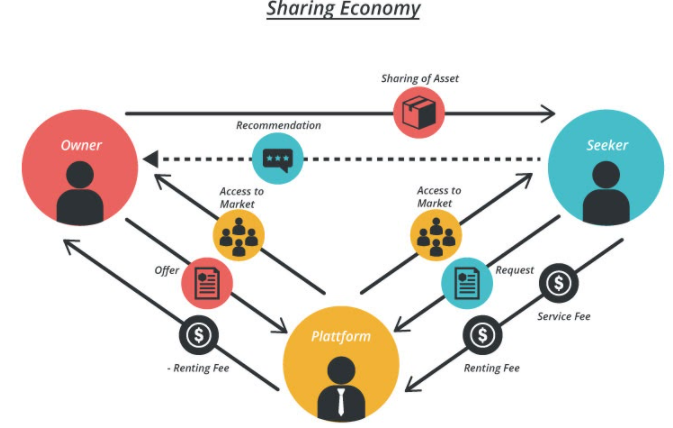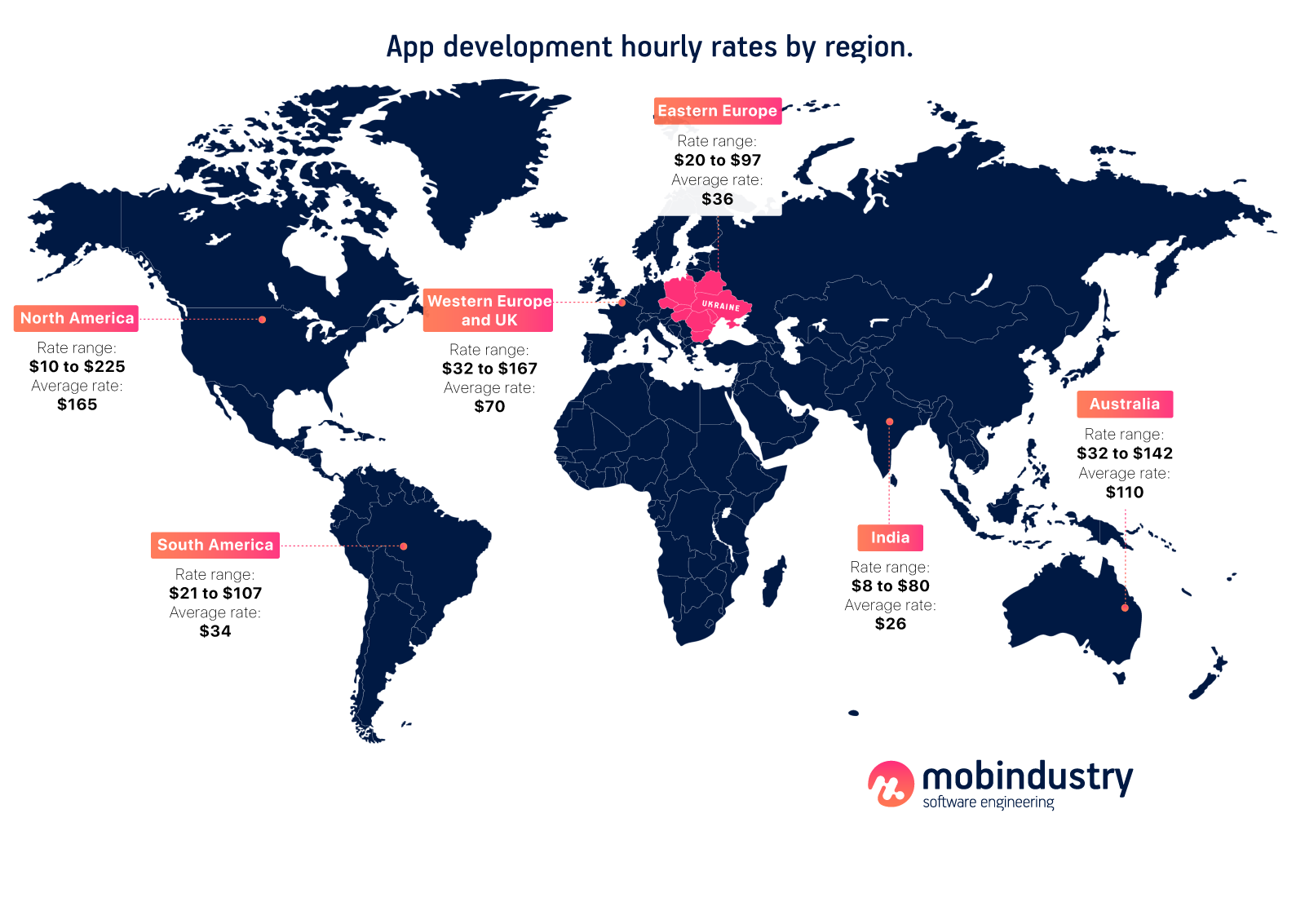Space Sharing Economy: Ideas, Business Models, Technologies
The sharing economy is a big trend. Today, we’ll talk about the space sharing economy, review the best space sharing platforms, explore the space sharing business model, and provide you with a list of technologies that are necessary for a successful sharing platform.
The sharing economy is considered one of the fastest-growing business trends in history.
If Airbnb ($31 billion) and Uber ($72 billion), with a combined market capitalization of $103 billion, were a country, it would be the 38th richest country in the world. In 2016, 44.8 million US adults participated in the sharing economy. By 2021, 86.5 million US consumers are expected to participate in the sharing economy.
What is the space sharing economy?
When we think of space sharing, Airbnb immediately comes to mind. But space sharing is evolving, and it comes in many shapes: garage rentals, storage rentals, parking spot rentals. All of this is considered space sharing. What drives this market is people’s mania for decluttering. People are willing to rent storage space, spare rooms, sheds, and attics to keep stuff in. This new tendency opens the opportunity for new space sharing businesses.
With the help of the space sharing economy, people can clear space in their houses, store business goods or tools in containers or storage facilities, and even rent parking spaces close to their work.
Space sharing economy business model
In the space sharing economy, private individuals share their free space with other private individuals, and a platform serves as an intermediary.
“In the collaborative economy it’s not the idea of sharing that’s new…
What’s different now is the introduction of technology into the concept.”
H. O. Maycotte, Umbel
People have been leasing assets to others for millennia. But with the advent of the internet, it’s become easier to link owners and lessees with so-called peer-to-peer (P2P) leases.
Sharing stands for “what’s mine is yours” (The Economist), and it’s becoming more and more popular for all types of assets. Now, it has caught up with space rentals.
The revenue model for the sharing economy is usually to charge a service fee for matchmaking services.

The sharing economy business model is based on these core features:
- Access instead of ownership. Users don’t have to buy an asset, as they can rent it from someone else.
- Sharing economy platforms bring together owners and lessees and simplify all interactions between them.
- Sharing economy platforms don’t own any of the assets they offer. Airbnb doesn’t own any apartments, and Zipcar doesn’t own any cars.
Success factors
Culture of trust. The sharing economy is based on trust between participants, so it’s imperative to establish commenting and rating mechanisms on your platform and to offer support in case a user violates the platform’s rules.
Smooth transactions. You can book a room through Airbnb on a tablet or mobile device, for example, reducing the transaction time and costs.
Constant user engagement. To maintain a certain level of supply and demand, you need to offer promotions. For example, Airbnb offers promotional codes to users to increase customer loyalty (so they don’t have to re-engage customers every six months).
Must-have features for a space sharing platform
Registration
Let users choose between three methods of registration. The first is to sign up via a social media account like Facebook or Instagram. The second is standard registration using an email, name, and other contact details. The third is registration via phone number. The easier registration is, the more users will register in your app.
User profiles
In profiles, users should be able to upload their personal information and edit details. A user profile in a space sharing app should let a user display a photo, their name, and a short description.
Payments log
Once a user has chosen a space to rent, they’ll need ato pay. A payment gateway is one of the most important features of any online marketplace app. You can let users pay by PayPal, credit card, or bank transfer.
Search
Search functionality is important for any space sharing service. It’s best to implement an advanced search system right away. Users should be able to filter spaces by location, type, price, and other characteristics.
Notifications
Use push notifications to improve user engagement. Push notifications can inform users about spaces available in their area.
Chat
After choosing a space, a user should be able to discuss details with the owner. Allow users to send photos and videos.
Geolocation
Geolocation can help users find the closest available spaces that correspond to their needs.
Space sharing economy technologies
For your reference, here’s a list of technologies that can be used to build a space sharing app.
Programming languages
- PHP
- JavaScript
Frameworks
- Flutter
- Yii 2.X.X
- Node.js
Web server
- Nginx
Cloud Storage
- Amazon S3
- EB3
Cloud database
- Amazon RDS
- MySQL 8.X.X
Big data
- Druid
- Pesto
- Airpal
Four steps to develop a space sharing app
Here are four steps to bring your space sharing app idea to life and simplify the development process.
1. Research your app’s target market
When developing a space sharing mobile app, the first thing you need to consider is your target audience. Understanding your users’ needs makes development easier and leads to a better final product. Find out as much as you can about your potential users. You can start by researching the following:
- Demographics. Find out the average age of your users, where they live, what devices they use, etc.
- Behavioral trends. Find out what decreases a user’s desire to download an app, your users’ security expectations, and so on.
To develop an amazing mobile application, we suggest creating a user persona, or a detailed portrait of your ideal user.
2. Choose a monetization model
The next step is to choose the right monetization model for your mobile application. Now that you know your users’ needs, you can predict what your users will pay for.
Sharing services usually charge a fee for every transaction.
3. Hire an app development team
The third step is to find a software development team you want to work with. The first phase of development will include business analysis, developing a technical specification, estimating the development cost, and planning the project. Before diving into the actual development of your space sharing mobile app, you and your team should set up an app development workflow, choose the main features for the app, and design an app concept.
Then your development team should create project milestones and start working on the minimum viable product, or MVP.
4. Create an MVP
Creating a space sharing app is a complex project. We recommend launching a minimum viable product first and testing its technical and business performance. By using an MVP approach, you’ll be able to find out what users like and don’t like in your app. Then you’ll be able to consider their feedback and improve your app.
How much does it cost to build a space sharing app?
The cost of developing a space sharing mobile app depends on these factors:
- Product features
- Product design
- Hourly rate of your development team
- Project size and complexity
- Technology stack
- Number of team members on the project
- Time frame
The biggest factor that influences a project’s cost is the hourly rate of developers, and that often depends on their location. For example, an application that costs $40,000 to build in the US will cost around $9,000 if developed by engineers in Ukraine.

Developing your project with a company based in Eastern Europe is cost-effective and gives you access to top talent.
Examples of the best space sharing platforms
Now, let’s analyze the current space sharing market. If you’re planning to build a space sharing platform, start researching your competitors to learn from their mistakes and successes.
#1 Stashbee

Stashbee is a storage and parking sharing platform. In Stashbee, users can browse a wide selection of spaces near them, chat to verified hosts, and book storage locations fast and easily.
Here’s the list of spaces that can be rented through Stashbee:
- Garages
- Warehouses
- Lock-ups
- Parking spaces
- Outbuildings
- Spare rooms
- Basements
- Lofts
- Containers
#2 Neighbor

Neighbor is a sharing economy neighborhood marketplace that’s on a mission to match people’s empty spaces with other people’s things. This service helps hosts set fair terms and helps renters find the right spaces. Similar to Stashbee, Neighbor has a pretty long list of space types for rent. The marketplace provides users with public profiles, verification checks, and secure automated payments. It also has a $2 million host guarantee and a $25,000 renter guarantee.
#3 Splacer

Splacer is an online space sharing platform that lets users list, discover, and book unique spaces for upcoming activities. The platform marketplace itself is a living urban scene where people can create unique experiences for their guests, brand followers, employees, or friends with access to a variety of places they’ve never seen before.
Event organizers can browse listings and filter by size, location, type of activity, or keyword. Once users find a location they like, they can connect the host for more information. Space owners subscribe to Splacer and provide basic information about a space, its location, and contact information. Once an owner’s account is approved by the Splacer team, the space owner can then provide users with additional space information, upload images, and select the types of events they welcome in their space.
Event organizers need to contact property owners for additional information about availability and prices. The owner of a space is responsible for ensuring that it’s ready for use prior to each event. Splacer facilitates a post-event review to ensure great venues and hosts receive the attention they deserve.
#4 Peerspace

Peerspace is an online space sharing marketplace for listing and booking unique places for any activity. It provides users with a wide variety of meeting spaces, event venues, galleries, and production studios.
Listing a space on Peerspace is free and easy. Space owners choose how they want to divide the space and what kinds of events they welcome. Once premises are rented out, payment is sent directly to the property owner’s bank account.
Quick summary of developing a space sharing app
A space sharing app, if done correctly, can become successful and bring a lot of value to users.
Key takeaways:
- Space sharing is evolving and comes in many shapes: garage space rentals, storage rentals, parking spot rentals. All of this is considered space sharing.
- The revenue model for the sharing economy usually is to charge a service fee for matchmaking services.
- Before diving into the actual development of your space sharing mobile app, you and your team should set up an app development workflow, choose the main features for your app, and design an app concept.
- Developing your project with a company based in Eastern Europe is cost-effective and gives you access to top talent.
- The sharing economy is based on trust between participants. It’s imperative to establish commenting and rating mechanisms on your platform and to offer support in case of abuse.
If you want to create a space sharing app but don’t know where to start, contact Mobindustry for a free consultation.

